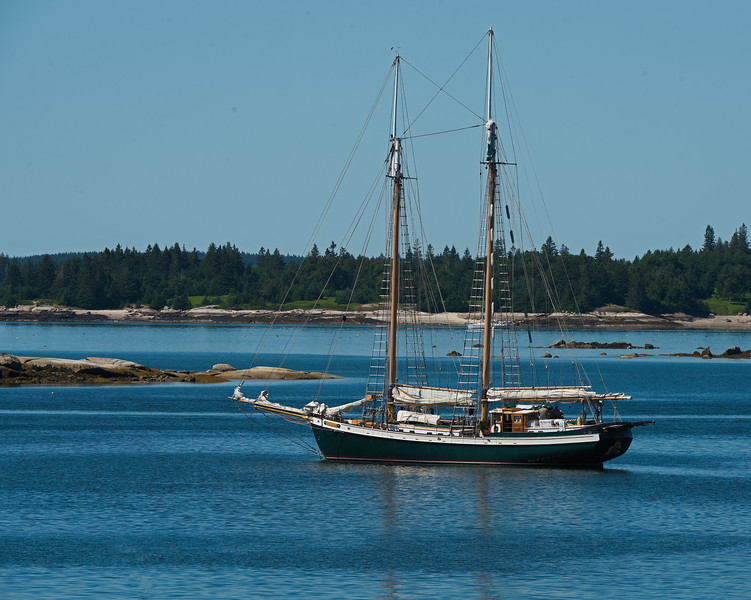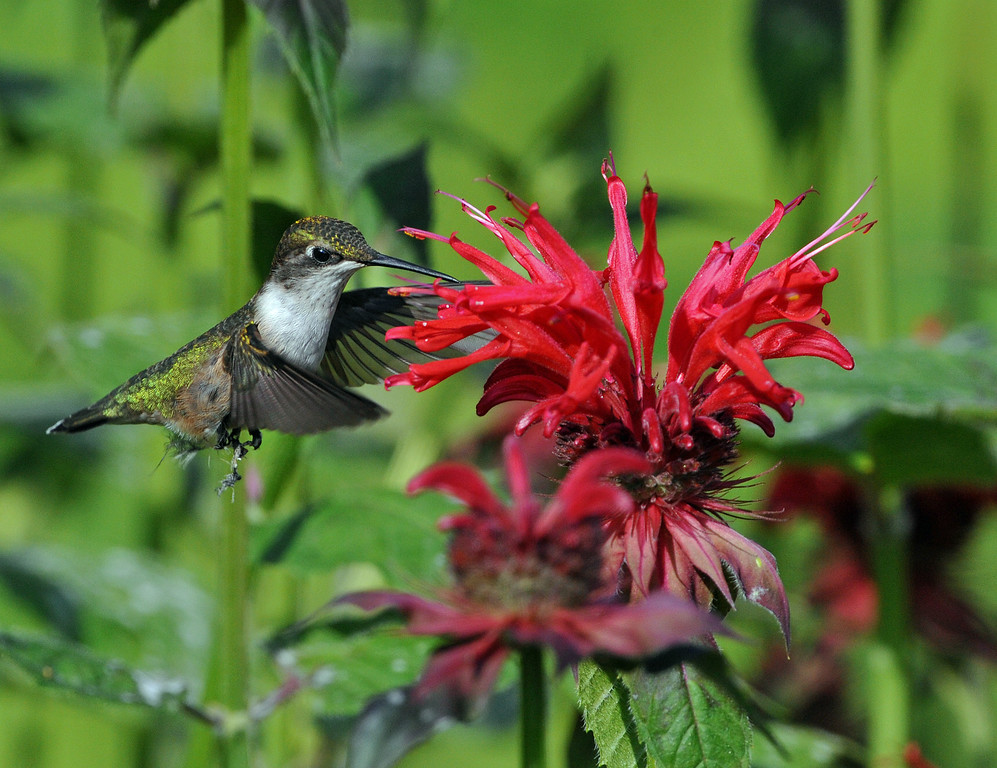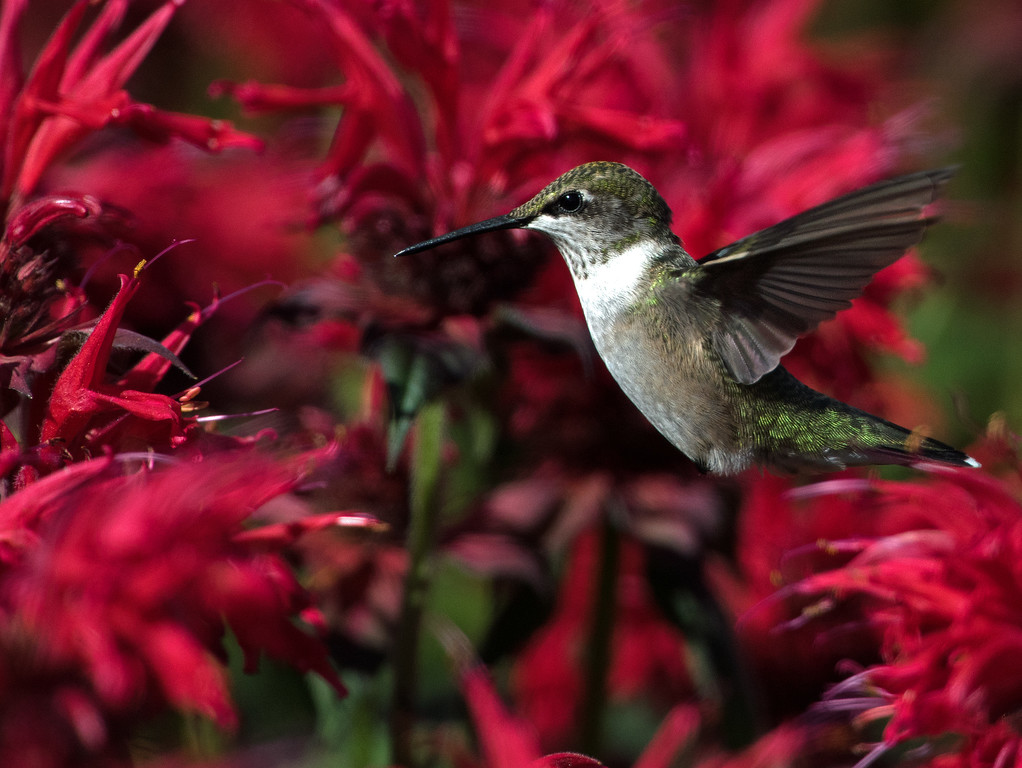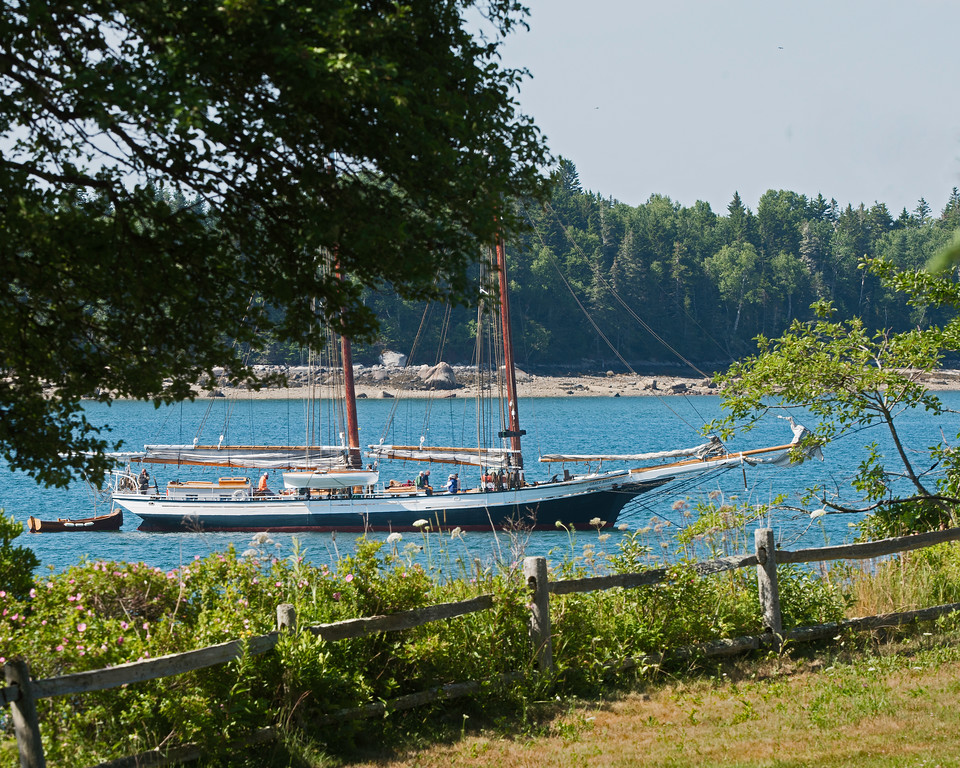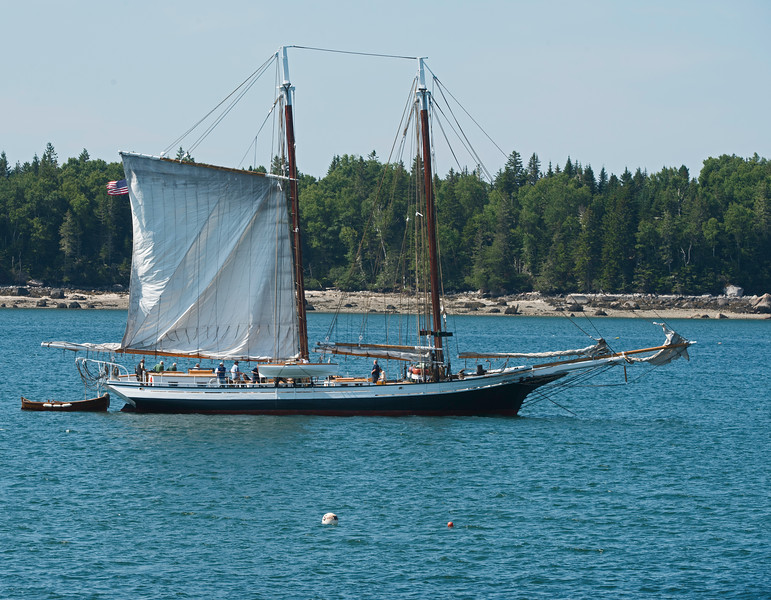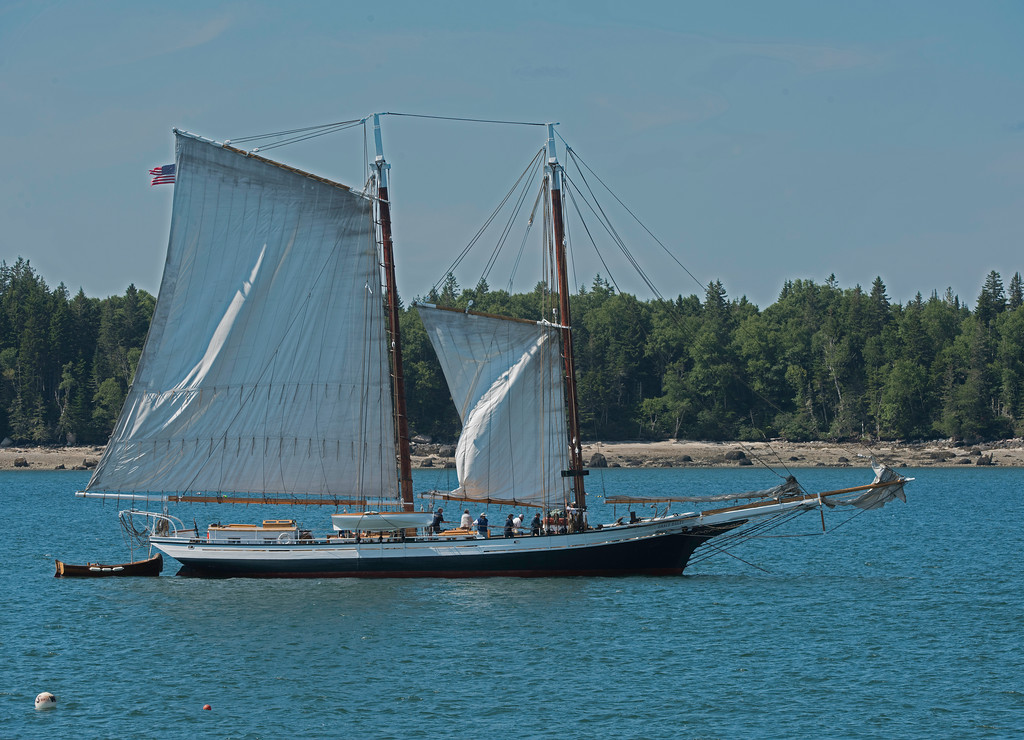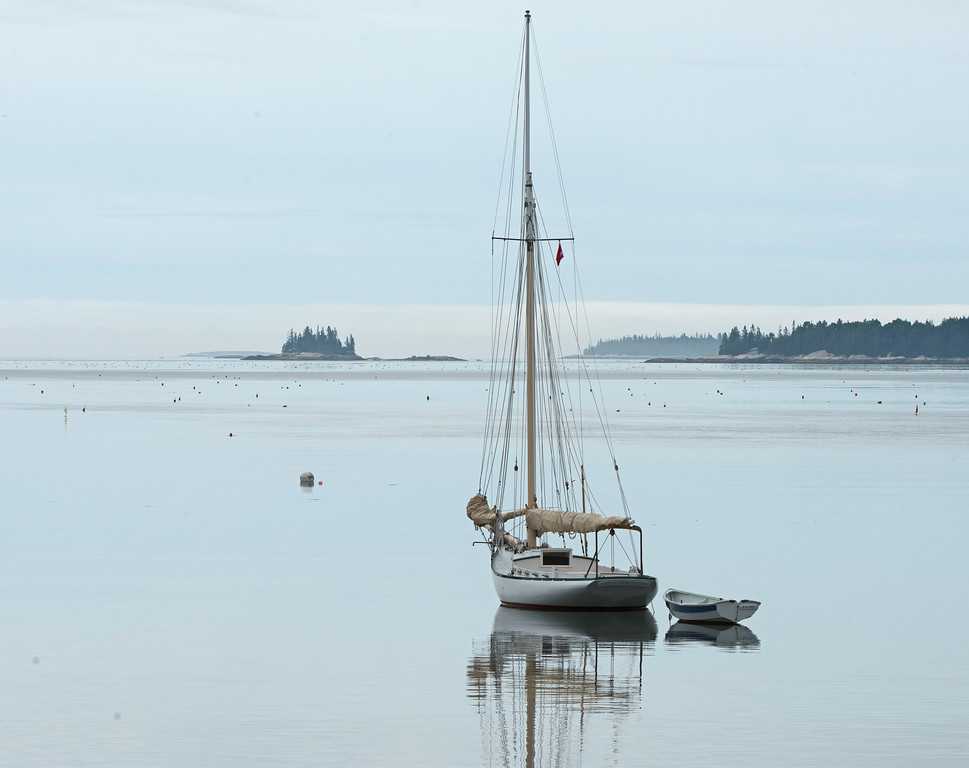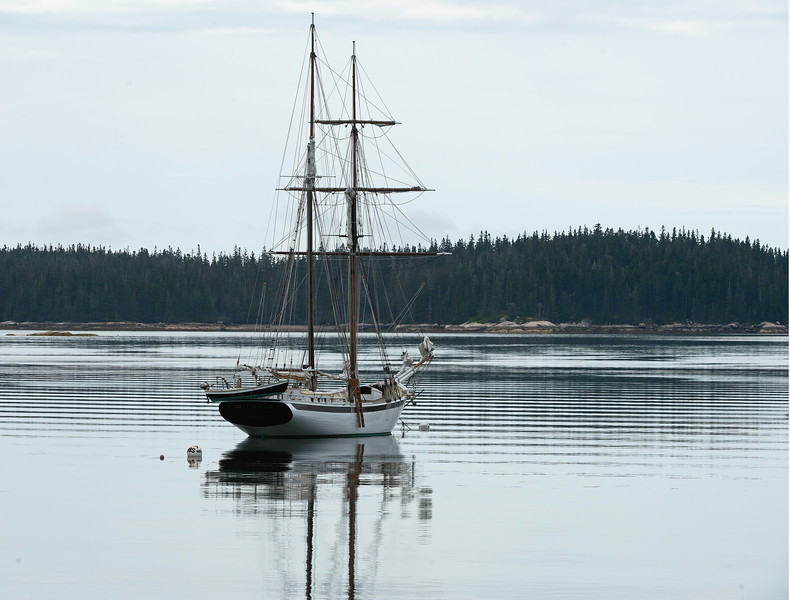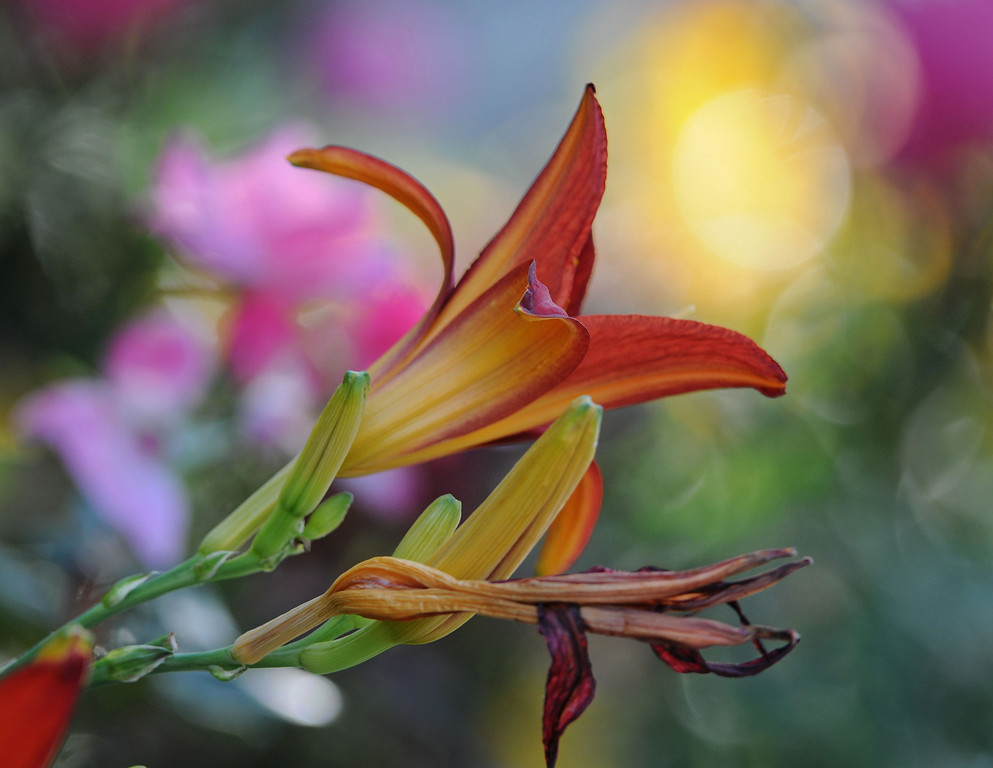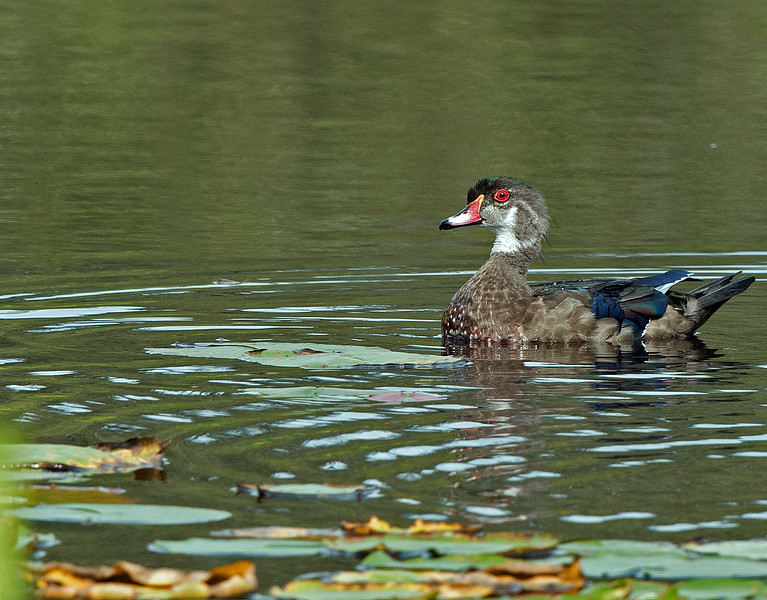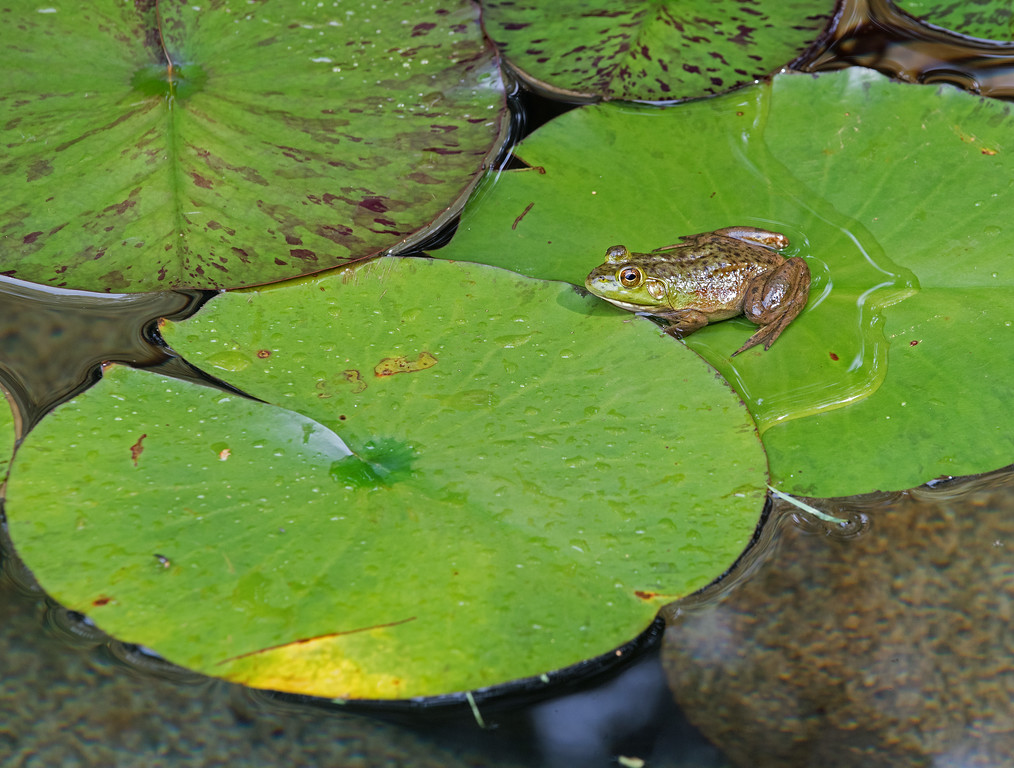We’ve been having a lot of fog lately, which prompts us to play games such as watching sailboats disappear into the dreaminess and predicting where they’ll reappear.
Here, Crackerjack has caught a breeze and heads eagerly into Great Cove’s oblivion. She’s a pert 12 ½-foot Haven with red sails and green hull; and, she seems to enjoy teaching WoodenBoat School students to sail. (Brooklin, Maine)





